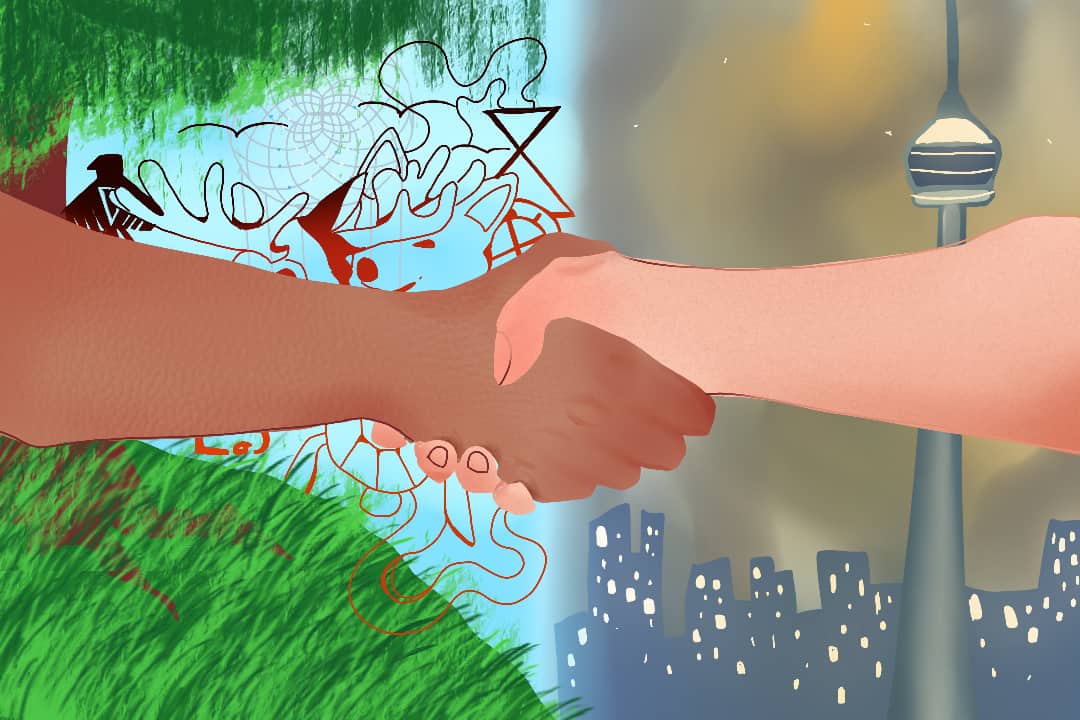To fight the climate crisis, the world requires immediate changes, from the habits of ordinary citizens to large corporations and the way they operate. The question becomes: what are the exact changes that we need to implement, and how can we implement them to generate the most significant impact?
To make any major impact on the climate crisis, we need to make a cultural shift. Since many Indigenous communities effectively prioritize land stewardship in a way that leads to increased biodiversity and lack of pollution, we should collaborate with Indigenous communities to work on these shifts.
Indigenous practices around protecting and nurturing the natural world are often particularly and visibly effective — although territories maintained by Indigenous peoples make up only close to 20 per cent of Earth’s land, these regions contain 80 per cent of our planet’s biodiversity. If we want to understand Indigenous approaches to the climate crisis, we have to learn about how their values influence their relationships with the land.
Studies done in conversations with Indigenous communities in Northern Ontario showed that many Indigenous populations in Canada view the land as the provider of the essentials for all forms of life. This mindset can affect how members of those communities make decisions that affect their environments — for example, one 2014 study noted an example of a Pic River Elder, who recognized the economic opportunities on their land but had more of a desire to treat the land with respect and give back than simply use it for economic gain. That is a more personal view than that of large corporations who seem to simply view land as a resource to exploit for financial benefits.
Similarly, many Indigenous cultures and nations share a belief in symbiosis between the land and its inhabitants. One example would be the Māori people in New Zealand, who treat rivers as individual life forces and make an effort to avoid polluting these waters in any way, improving the quality of life of both human and non-human inhabitants that depend on the river.
Achieving this symbiotic relationship occurs through the acknowledgement that the Earth is a provider and that it is up to us, as the individuals surviving off of what the land supplies, to maintain its ability to provide. We can understand this as “land stewardship,” as opposed to land ownership.
Land stewardship as a responsibility is a product of the connection between the spirit and mortal worlds and everything within those worlds. This holistic perspective of the land is essential for the construction and application of innovative and effective climate solutions.
Unfortunately, Indigenous populations around the world are highly susceptible to the effects of the climate crisis because of their close relationship with the environment and its resources. There is a strong consensus among both climate scientists and Indigenous leaders in Canada that the climate crisis is a product of colonialism. Many Western values that colonialism enforces are rooted in capitalism and competition instead of interconnectedness and genuine collaboration.
Instead of using the resources the Earth provides when we need them for survival, corporations and governments use resources as much as they can, creating an exploitative dynamic between the individual and the land. Because corporations have such large-scale impacts on the environment, we should seek awareness regarding the values and beliefs of the corporations to which we give money, and make changes accordingly, even as we focus on lifestyle choices.
In that vein, when we reflect on cultural values surrounding preservation and stewardship we see in Indigenous cultures, we can come to a place of appreciation for the land that we are privileged to work, learn, and play on, and often take for granted. We can learn to share this knowledge and have important conversations regarding our responsibility to the land, and we can seek out more information on how we can give back.


